
Heavitree is a historic village and parish situated formerly outside the walls of the City of Exeter in Devon, England, and is today an eastern district of that city. It was formerly the first significant village outside the city on the road to London. It was the birthplace of Thomas Bodley, and Richard Hooker, and from the 16th century to 1818 was a site for executions within what is now the car park of the St Luke's Campus of the University of Exeter.

Livery Dole in Exeter, Devon, is an ancient triangular site between what is today Heavitree Road and Magdalen Road, in the eastern suburbs of Exeter. It was most notoriously used as a place for executions, and has contained an almshouse and chapel since 1591.

Exeter is a constituency composed of the cathedral city and county town of Devon represented in the House of Commons of the UK Parliament. The constituency has had a history of representatives from 1900 of Conservative, Liberal Party, Independent and Labour representation.

Topsham is a town in Devon, England, located on the east side of the River Exe, immediately north of its confluence with the River Clyst and the former's estuary, between Exeter and Exmouth. Topsham is a historic port and was designated a town by a 1300 royal charter granted by Edward I; it was formally amalgamated into the City of Exeter in 1966. The population of the town, recorded at the 2021 census, is 4,146.

Eastville is the name of both a council ward in the city of Bristol in the United Kingdom and a suburb of the city that lies within that ward. The Eastville ward covers the areas of Eastville, Crofts End, Stapleton and part of Fishponds. Notable places within the ward include Bristol Metropolitan Academy and Colston's School, and the Bristol and Bath Railway Path also passes through the ward.

Basford is a northerly suburb of Nottingham, England, incorporated into the city in 1877. It gave its name to Basford Rural District, which existed from 1894 to 1974. The ward population at the 2011 census was 16,207, estimated at 16,779 in 2019. Next to Old Basford is New Basford, which is mainly Victorian. Basford lies close to the River Leen, a tributary of the River Trent. It is linked to Nottingham City Centre to the south and Hucknall and Bulwell to the north by the Nottingham Express Transit tram service.

Newtown is an area of Exeter between St Sidwells and Heavitree and has been an area for the poor since Saxon times. A workhouse was built in 1671 on a site currently used as a car park, but Newtown remained largely rural up until the 19th century. Around 1700 a new workhouse was built on what is now the site of Heavitree Hospital.

Wonford is a former village, manor and ecclesiastical parish in Devon, England, now a part of the City of Exeter. The 13th century St Loye's Chapel situated within the parish now gives its name to the surrounding location. Wonford is situated next to the former parish of Heavitree, now both covered by the suburbs of Exeter.
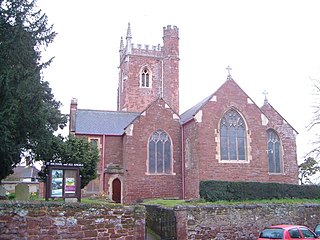
Alphington is a former manor and village, now a suburb of the City of Exeter in Devon. The ward of Alphington has a population of 8,250 according to the 2001 census, making it the third largest in Exeter, with the village itself accounting for about a quarter of this figure. The ward population increased to 8,682 at the 2011 census. It is surrounded on two sides by countryside, with the Marsh Barton trading estate to the east and Exeter City to the north. The Alphin Brook passes around the Northern edge of Alphington. Alphington is on the Southwestern side of Exeter.

The Royal Devon and Exeter Hospital, and with a main site sometimes known as Wonford Hospital, is a large teaching hospital situated in Exeter, Devon, England, and is run by the Royal Devon University Healthcare NHS Foundation Trust.
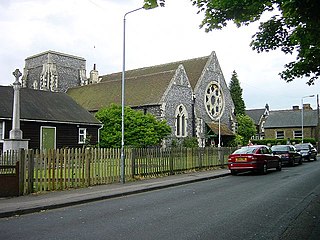
Murston is a suburb of Sittingbourne in Kent, England. It is about 1 mile north-east of central Sittingbourne, on the east bank of the Milton Creek.

Exeter Power Station is a former coal-fired power station on the River Exe quayside, Exeter, England.
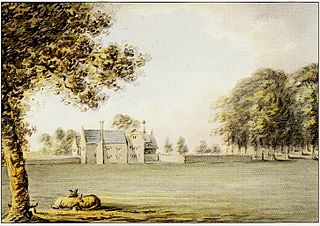
Cowick is a suburb of the City of Exeter in Devon. Historically it was a manor situated in the parish of St Thomas, Exeter, within the hundred of Wonford. It was formerly the site of a Benedictine monastery.

Various monasteries and other religious houses have existed at various times during the Middle Ages in the city of Exeter, Devon, England.
Polsloe Priory, also known as St Katherine's Priory, was a Benedictine priory for women in Devon, England. It was founded in around 1159 on land to the east of Exeter, on a site that is now part of the city's suburb of Polsloe. At the time it was the only religious house for women in Devon, but two others were founded later: at Cornworthy and Canonsleigh Abbey. The first prioress of whom any record survives was Avelina in 1218. Amongst the holdings of the priory was the Church of St Mary, Marston Magna in Somerset.

St James Priory, Exeter was a priory in Devon, England.
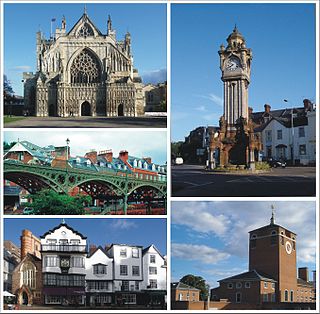
Exeter is a city in Devon, South West England. It is situated on the River Exe, approximately 36 mi (58 km) northeast of Plymouth and 65 mi (105 km) southwest of Bristol.
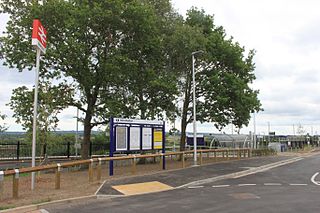
Newcourt is a recently developed suburb of Exeter, Devon, England, located between Digby and Topsham. The area primarily consists of a housing estate, but includes also includes a number of amenities such as a community centre, a train station (Newcourt) and a branch of IKEA, which opened in May 2018.

The Heavitree Hospital is a hospital currently operated by the Royal Devon University Healthcare NHS Foundation Trust, as a satellite site of the Royal Devon and Exeter Hospital with its main site a short distance away at Wonford. The hospital started as the Exeter Workhouse, and was also known as the Exeter City Hospital.


















